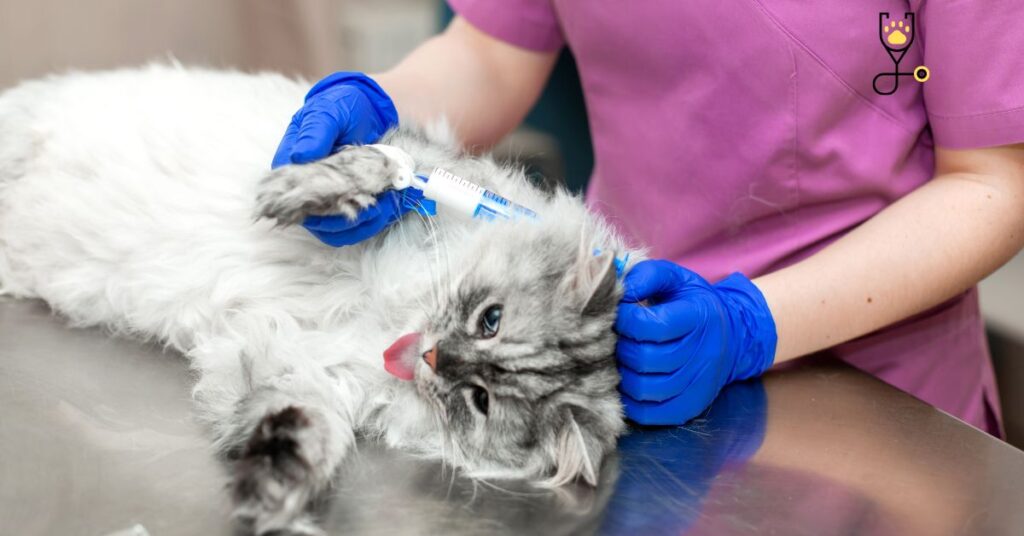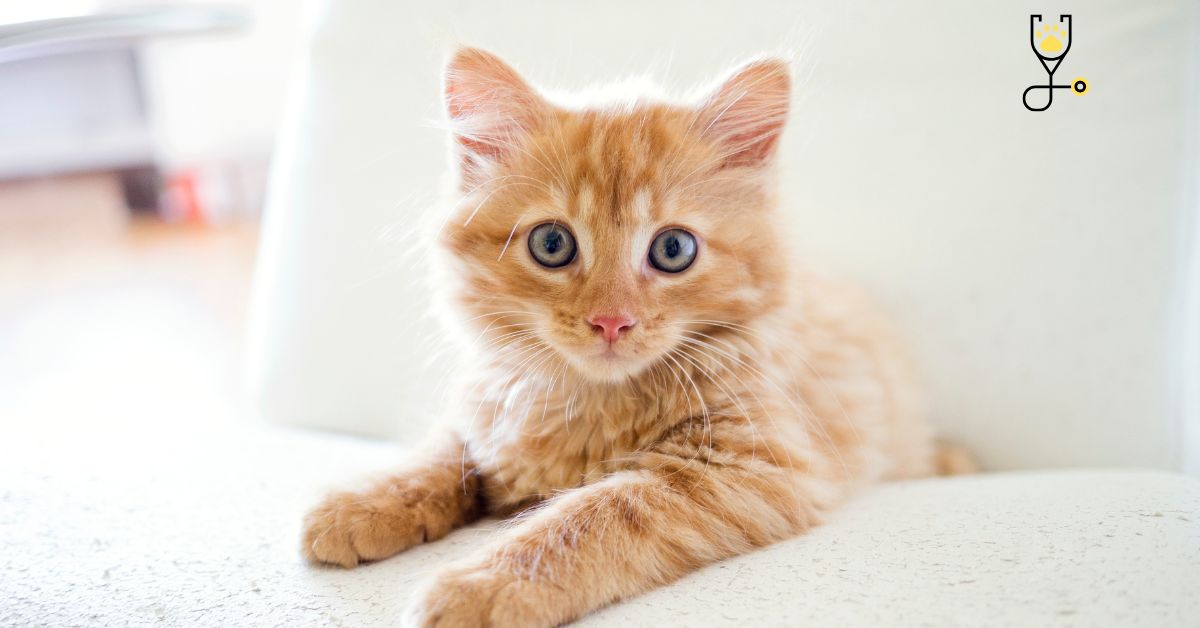Cats are susceptible to anemia for a number of reasons. Fortunately, anemia is treatable and can often be prevented with a few simple steps. This post will explore the causes, treatment, and prevention of anemia in cats. Please consult your veterinarian if you have any questions or concerns about your cat’s health. Thank you for reading!
What is anemia in cats?
Anemia is a condition in which the blood is unable to carry enough oxygen to the body’s tissues. This can be caused by a number of factors, including blood loss, bone marrow disease, or a deficiency in red blood cells. Anemia can be a serious condition if left untreated, so it is important to be aware of the signs and symptoms.
What are the signs and symptoms of anemia in cats?
There are a number of signs and symptoms that may indicate anemia in cats. These can include:
1. lethargy: Often, the first sign of anemia is that your cat becomes less active and sleeps more than usual.
2. pale gums: Another common symptom of anemia is pale gums. You may notice that your cat’s gums are a lighter color than normal or that they have a yellowish tinge.
3. rapid breathing: Anemia can also cause rapid breathing, as the body tries to get more oxygen to the tissues.
4. heart murmur: In some cases, anemia can cause a heart murmur. This is often detected by a veterinarian during a routine examination.
5. weakness: If your cat is weak and wobbly, it may be due to anemia.
6. appetite loss: Anemia can also lead to a loss of appetite.
7. weight loss: Along with a loss of appetite, anemia can also cause weight loss.
8. vomiting: In some cases, anemia can cause vomiting. This may be due to a lack of red blood cells in the intestines (known as intravascular hemolysis).
9. diarrhea: Diarrhea is another possible symptom of anemia in cats.
10. jaundice: Jaundice is a condition in which the skin and whites of the eyes become yellowish-orange due to a build-up of bilirubin in the blood. This can be a sign of severe anemia.
- If you notice any of these signs or symptoms, it is important to take your cat to the veterinarian for an examination.
What causes anemia in cats?
There are a number of different factors that can lead to anemia in cats. These include:

1. Blood loss: One of the most common causes of anemia in cats is blood loss. This can occur due to trauma (such as a car accident), surgery, or a disease such as cancer.
2. Bone marrow disease: Bone marrow disease can also cause anemia by interfering with the production of red blood cells. This type of disease is more common in older cats.
3. Deficiency in red blood cells: A deficiency in red blood cells canIf you notice any of these signs or symptoms, it is important to take your cat to the veterinarian for an examination.
4. Immune-mediated hemolytic anemia: Immune-mediated hemolytic anemia (IMHA) is a condition in which the body’s immune system attacks and destroys red blood cells. This can be a serious and life-threatening condition.
5. Infection: Infections, such as feline leukemia virus (FeLV) or feline immunodeficiency virus (FIV), can also cause anemia.
6. Inflammation: Inflammatory diseases, such as inflammatory bowel disease (IBD), can lead to anemia by causing damage to the intestines. This can result in blood loss or a decrease in the absorption of nutrients.
7. Nutritional deficiencies: Nutritional deficiencies, such as a lack of iron, can also cause anemia.
How is anemia diagnosed in cats?
If you notice any signs or symptoms that may be associated with anemia, it is important to take your cat to the veterinarian for an examination. The veterinarian will perform a physical examination and take a medical history. They may also recommend some or all of the following tests:
1. Complete blood count (CBC): A CBC is a test that measures the number of red blood cells, white blood cells, and platelets in the blood. This can help to determine if there is anemia present.
2. Chemistry panel: A chemistry panel is a group of tests that are used to evaluate the organs and assess how well they are functioning. These tests can help to rule out other potential causes of anemia, such as liver disease or kidney disease.
3. Coagulation panel: A coagulation panel is a group of tests that are used to assess the clotting ability of the blood. This can be important in determining if there is an underlying cause of the anemia, such as a bleeding disorder.
4. Urinalysis: A urinalysis is a test that evaluates urine for signs of infection or disease. This can be helpful in ruling out urinary tract infections or other conditions that may cause anemia.
5. X-rays: X-rays may be recommended to evaluate the lungs and heart for any abnormalities. This can be important in determining if there is an underlying cause of the anemia, such as a tumor.
6. Ultrasound: An ultrasound may be recommended to evaluate the organs for any abnormalities. This can be helpful in determining if there is an underlying cause of the anemia, such as a tumor.
7. Biopsy: A biopsy may be recommended to evaluate the organs for any abnormalities. This can be helpful in determining if there is an underlying cause of the anemia, such as a tumor.
How is anemia treated in cats?
The treatment of anemia will vary depending on the underlying cause.

- If the anemia is due to blood loss, treatment will focus on replacing the lost blood. This can be done through transfusions of packed red blood cells or whole blood.
- If the anemia is due to a deficiency in red blood cells, treatment will focus on correcting the deficiency. This can be done with supplements of iron, folic acid, or vitamin B12.
- If the anemia is due to bone marrow disease, treatment will focus on supporting the bone marrow and correcting the underlying cause of the disease.
- If the anemia is due to immune-mediated hemolytic anemia, treatment will focus on suppressing the immune system and correcting the underlying cause of the disease.
- If the anemia is due to infection, treatment will focus on treating the infection.
- If the anemia is due to inflammation, treatment will focus on reducing the inflammation.
- If the anemia is due to nutritional deficiencies, treatment will focus on correcting the deficiency.
How can anemia be prevented in cats?
Anemia can be prevented by taking steps to prevent the underlying causes of the condition. This may include vaccinating your cat against feline leukemia virus (FeLV) and feline immunodeficiency virus (FIV), feeding a balanced diet, and avoiding exposure to toxins.
Most prone cat breeds develop anemia:
- Siamese
- Birman
- Manx
- Persian
- Sphynx
- British Shorthair
Prognosis
The prognosis for cats with anemia will vary depending on the underlying cause. If the anemia is due to blood loss, the prognosis is generally good. If the anemia is due to a deficiency in red blood cells, the prognosis is generally good. If the anemia is due to bone marrow disease, the prognosis will depend on the underlying cause of the disease. If the anemia is due to immune-mediated hemolytic anemia, the prognosis will depend on the underlying cause of the disease. If the anemia is due to infection, the prognosis will depend on the type of infection present. If the anemia is due to inflammation, the prognosis will depend on the underlying cause of the inflammation. If the anemia is due to nutritional deficiencies, the prognosis will depend on the severity of the deficiency.
Conclusion
Anemia is a common condition in cats that can be caused by a variety of conditions. Treatment will vary depending on the underlying cause. Anemia can be prevented by taking steps to prevent the underlying causes of the condition. The prognosis for cats with anemia will vary depending on the underlying cause.
Frequently Asked Questions
The signs of anemia can vary depending on the underlying cause. Common signs include lethargy, weakness, pale gums, and rapid breathing. If you notice any of these signs in your cat, it is important to take them to the vet for a check-up.
There are many possible causes of anemia in cats, including blood loss, deficiency in red blood cells, bone marrow disease, immune-mediated hemolytic anemia, infection, inflammation, and nutritional deficiencies.
The treatment of anemia will vary depending on the underlying cause. If the anemia is due to blood loss, treatment will focus on replacing the lost blood. This can be done through transfusions of packed red blood cells or whole blood. If the anemia is due to a deficiency in red blood cells, treatment will focus on correcting the deficiency. This can be done with supplements of iron, folic acid, or vitamin B12. If the anemia is due to bone marrow disease, treatment will focus on supporting the bone marrow and correcting the underlying cause of the disease. If the anemia is due to immune-mediated hemolytic anemia, treatment will focus on suppressing the immune system and correcting the underlying cause of the disease. If the anemia is due to infection, treatment will focus on treating the infection. If the anemia is due to inflammation, treatment will focus on reducing the inflammation. If the anemia is due to nutritional deficiencies, treatment will focus on correcting the deficiency.
Anemia can be prevented by taking steps to prevent the underlying causes of the condition. This may include vaccinating your cat against feline leukemia virus (FeLV) and feline immunodeficiency virus (FIV), feeding a balanced diet, and avoiding exposure to toxins.







